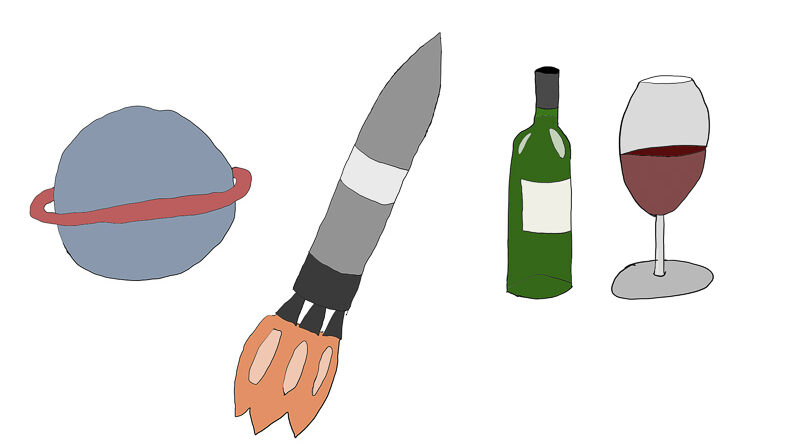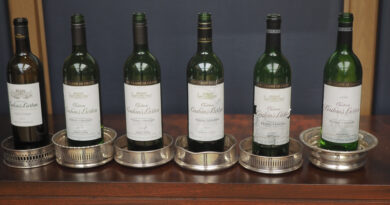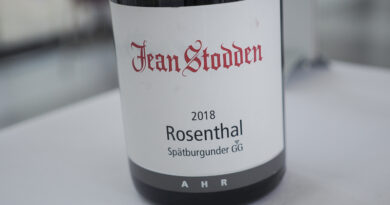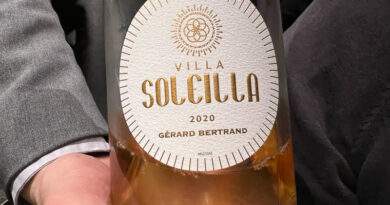Ageing wines in space? Sending dormant vines into space? Is this at all scientifically interesting?
Ageing wine in space? It’s all over the news at the moment, courtesy a rather bizarre publicity stunt that’s looking to garner attention for Space X.
It’s all good fun, on one level. But I question the scientific basis of the study.
The idea was that 12 bottles of Petrus spent 438 days at zero gravity (more correctly, microgravity), orbiting the earth in the thermosphere. On their return to earth, one bottle was recently opened at a tasting and some of the esteemed tasters found it tasted a bit different.
This isn’t good science, as I’ll explain. It looks more like a publicity stunt than a well designed study. It’s not even that interesting (why would you expect micro gravity or cosmic radiation to affect wine ageing?), but it is headline grabbing, because of (1) Petrus, one of the world’s most famous wines; and (2) space!
From a scientific point of view, it’s a little embarrassing in my opinion. The Petrus in question is 2000, and it’s a wine that is almost 21 years old, and it will have been under cork for around 19 years. Corks are a natural product, and vary. There’s an immediate confounder here: if there is a difference between the two wines tasted, how do we know it isn’t because of the cork? We don’t. If you opened a case of 2000 Petrus and did proper sensory analysis of the bottles, you might expect them to taste a little different for precisely this reason.
Also, one wine has been sitting in a cellar; the other has been shaken up and transported, and subject to some temperature changes. For the experiment to have any credibility, the control would have to have the experience of the space bottle simulated in some way, leaving microgravity as the only experimental variable.
Also, if this was to be a serious scientific study (it can’t be because of the obvious confounders), then the analysis should have been done by a trained sensory panel to get clear results using established methods in sensory science.
In the end, how wine ages in microgravity isn’t an interesting question. I’ve no reason to suspect it will age any differently. Can anyone think why microgravity will change wine ageing? Then why go to the expense of doing this ‘experiment’? I can’t see it being on any wine research institute’s top 500 list of research priorities.
In a second part of the study, 320 dormant canes of Cabernet Sauvignon and Merlot spent 6 months circling the earth, subject to zero gravity and galactic cosmic radiation (GCR). If you want an in depth perspective on GCR here’s an article.
The experiment is decribed here.
The ISS, where the canes spent their time in microgravity, is somewhat protected from GCR, which makes it safer for people to spend extended times in it.
I find this whole experiment perplexing. It makes some bold claims about how it is going to help the wine industry deal with climate chaos, and it throws in the term ‘self-directed evolution’, which sound very marketing rather than scientific.
Plants do grow differently in microgravity. And if they are exposed to radiation, they will accumulate some mutations. These will be random mutations that alter the DNA. The use of mutagenesis has been part of plant breeding attempts since the late 1920s. The idea is expose plant tissue to radiation or chemical mutagens, and you will induce some mutations. Most will be deleterious, but then occasionally there will be a mutation that does something interesting. You need a fairly strong radiation source or a chemical mutagen, and a lot of samples. It’s a numbers game (you’d need a lot, lot more than 320 samples to expect to get any interesting results). And it’s not at all clear that combining low level GCR with microgravity is going to be any more of an effective strategy than just using a similar radiation source on earth in a laboratory setting.
There are currently far more targeted breeding strategies than random mutagenesis. You can read about them here read about them here.
There’s a lot of talk about epigenetics at the moment. I’ve written about it here: https://www.winesofsa.co.uk/news-features/epigenetics-and-old-vines/
And this study cites epigenetic changes as being an element of this study. But it is with dormant canes, not living plant tissue, and even if any epigenetic changes were to occur (they wouldn’t happen in dormancy) they won’t be passed on if further vines are propagated by taking cuttings from a vine that has grown from canes that have spent time in space.
I mentioned my scepticism about these experiments to Dr Dylan Grigg, a viticulturist from Australia who did his PhD on epigenetic changes in old vines. He said that while he would be interested to see how living vines grew in microgravity, he shared my concerns about this experimental design. ‘I’m with you on this one!’ he said. ‘Dormant canes in space…? accelerating epigenetic processes? I don’t see the point, surely resources could be better spent for some real research. Better just stick some canes in the microwave for 20 seconds and see what happens.’
Grigg continued, ‘these epigenetic modifications are adaptions by plants to their environment, they work by altering the packaging to change the expression of DNA in response to environmental cues. In a state of dormancy the entire system is in shutdown mode, enough to survive months of harsh winter cold.’ Grigg points out once these dormant canes start to grow, they will undergo ‘massive epigenetic changes and re-programming, mainly due to the fact that they now need to adapt to function as an individual entity: they don’t even have roots yet!’
Dr Mark Krasnow, a viticulturist based in New Zealand agrees. ‘The mutation study in canes is ridiculous,’ he says. ‘There are plenty of more reproducible mutagens we could use here on earth, including simulated cosmic radiation. I do think mutations could accumulate in dormant tissue however. They obviously wouldn’t be expressed until those cells began to metabolise and divide though.’




